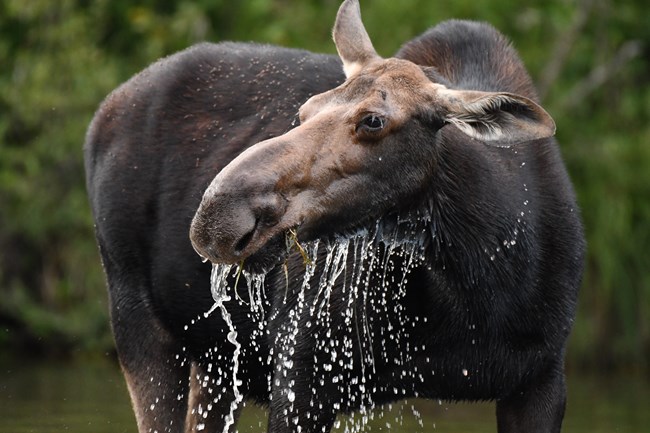Last updated: March 31, 2023
Article
Climate Change at Isle Royale: Moose
Moose are one of the most iconic mammals on Isle Royale. The island is well suited for the woodland giant, with its variety of vegetation and cool climate. The moose’s large body mass and dark brown coat are helpful for retaining heat during cold northern winters, and their long legs make it easy to navigate deep snow. These characteristics make moose well adapted to survive on Isle Royale, but a warming climate threatens the species and the ecosystem it relies on.

Jonathan Ringdahl
Climate Concerns
Though summer provides moose a plentiful buffet, it brings with it higher temperatures which drive this cold-loving creature into the water. A dip in Lake Superior might provide momentary relief for individual moose, but the same cannot be said for the species as a whole. Moose are already at the southern edge of their habitat range on Isle Royale, so increasing temperatures could signal distress for the continuation of the species.
Balsam Fir
Balsam fir is plentiful on Isle Royale now, but as a cold weather species, it is vulnerable to warming climates. Since it is the primary winter food for moose, the loss or reduction of this species could affect the island ecosystem.
Winter Tick
Female winter ticks take a blood meal from moose each spring before laying eggs. In years when ticks are abundant, there can be 100,000 ticks on a single moose. Moose can lose a lot of blood, and itching can lead to hair loss and hypothermia. Warmer springs are linked to reproductive success for winter ticks.
